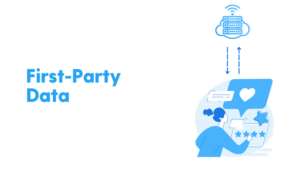You might be wondering what Amazon Brand Analytics is all about and how it will help you to bring much-needed brand awareness to potential customers. We have compiled this Amazon Brand Analytics Guide 2023 so that you will be able to get valuable insights to empower you as a Brand Owner.
Amazon Brand Analytics Guide will surely inform you, enabling you to make strategic decisions about your product portfolio and marketing/advertising activities.
What is Amazon Brand Analytics?
Amazon Brand Analytics (ABA) acts as the treasure trove for the sellers listing their products on Amazon as this tool provides valuable insights into the identification of potential customers, their purchasing behavior/patterns, competitors, and search queries.
If a seller is considering framing the marketing and advertising strategies, these valuable insights empower the brand owner in the strategic decisions for the same, which further helps in building an effective product portfolio.
In case you want to use the Amazon Brand Analytics tool, then you need to meet the below-mentioned requirements:
- Owner of the brand.
- Member of Amazon Brand Registry Program.
- Responsible for selling products of the same brand on Amazon.
- The brand must maintain an active and registered trademark.
The most strategic change that was announced in 2020 by Amazon was that now Brand owners can access the ABA (Amazon Brand Analytics) for free. The caveat to this was that it was made mandatory by Amazon for the brands to be registered through Amazon Brand Registry.
How can one access Amazon Brand Analytics?
3 steps to access Amazon Brand Analytics:
- First, you need to log in to your Amazon Seller Central account.
- Now click on “Reports” displayed in the main navigation menu.
- Lastly, you are required to select “Brand Analytics” displayed in the dropdown menu.
After clicking on “Brand Analytics,” you will be able to use Amazon Brand Analytics.
What is included in the Amazon Brand Analytics Report?
Within Amazon Brand Analytics, you can discover 5 reports:
- Amazon Search Terms Report
- Repeat Purchase Behavior Report
- Market Basket Analysis Item Report
- Market Basket Analysis Item Comparison & Alternate Purchase Behavior
- Demographics Report
Check the detailed list of all Amazon reports.
Amazon Search Terms Report
It is the Amazon Search Terms Report that will reveal how your, as well as your competitor’s products, are found by the online shoppers by sharing the search terms that initially led the customers to your brand. Not only this, but this report also informs the seller about the number of clicks and conversions that their products have earned for the specific keywords.
Amazon Search Terms Report allows access to the following product data:
- Search Terms: These are the terms potential customers use when they search to find your products on Amazon.
- Search Frequency Rank: It informs about the popularity of the search term in comparison to the other to know the position of your product listing for the most important keywords.
- Click Share: It informs about how many times shoppers click on a product that is being sold on Amazon after using a specific search term in comparison to how many times shoppers click on any other product after using a similar search term.
- Conversion Share: It informs how many times shoppers purchased the product that is being sold on Amazon after using a specific search term compared to how many times shoppers purchased any other product after using that exact search term.
Repeat Purchase Behavior
It is the Repeat Purchase Behavior report that provides insights into the repeat purchases of the products by Amazon shoppers.
Amazon Repeat Purchase Behavior Report allows access to the following order data:
- Orders: It informs the sellers about the total number of orders, both first-time and repeats purchases.
- Unique Customers: It informs the sellers about the total number of unique customers, both first-time and repeats.
- Repeat Customers: Based on the total number of unique customers, this report displays the percentage of repeat customers.
- Repeat Purchase Ordered Product Sales: It displays the percentage of sales coming from repeat purchases. This specific information is also provided as a monetary value for reference.
Market Basket Analysis Item
It is the Market Basket Analysis Item Report that provides Brand owners information about which other products are purchased by Amazon shoppers (in aggregate) along with Brand owner’s products.
Amazon Market Basket Analysis Item Report allows access to the following product data:
- Product ASIN (Amazon Standard Identification Number): It informs sellers about the ASIN of the products which are purchased very often by Amazon shoppers along with your product.
- Product Title: It informs sellers about the title of the products, which are purchased very often by Amazon shoppers along with your product.
- Combination Rate: It displays the percentage of orders for your products along with the orders of other sellers’ products in a combined format.
Market Basket Analysis Item Comparison & Alternate Purchase Behavior
The Market Basket Analysis Item Comparison and Alternate Purchase Behavior Report show the top three products compared and purchased by Amazon shoppers instead of purchasing your products. Not only this, but the report also reveals how often your products are compared to the top three products by customers.
Market Basket Analysis Item Comparison and Alternate Purchase Behavior Report allow access to the following product data:
- Compared ASIN: It informs sellers about the ASIN of the compared product.
- Compared Product Title: It informs sellers about the title of the compared product.
- Compared Percentage: It displays the percentage of times that the product of another seller is compared to yours.
- Purchased ASIN: It informs sellers about the ASIN of the product bought over yours.
- Purchased Product Title: It informs sellers about the title of the product bought over yours.
- Purchased Percentage: It informs sellers about the percentage of times that product of other sellers bought over yours.
Demographics
It is the Demographics report that helps the sellers understand who is purchasing their products by displaying demographic data, including-
- Age: The age range of your Amazon shoppers.
- Education: The level of education of your Amazon shoppers.
- Annual Income: The average annual income of your Amazon shoppers.
- Gender: Whether Amazon shoppers who buy your products are male or female.
- Marital Status: Whether Amazon shoppers of your products are married or not.
- Unique Customers: The number and percentage of your Amazon shoppers associated with a particular demographic.
- Product Sales: The number and percentage of sales of products coming from a particular demographic.
- Ordered units: The number and percentage of orders of products coming from a particular demographic.
How does Amazon Brand Analytics work?
Now that Amazon Brand Analytics provides valuable data to frame the right marketing and advertising strategies, we listed here some of the steps to follow by which you can procure relevant data:
- To view the report, you need to select a particular date range from the dropdown list.
- You need to use related keywords, search terms, names of the products, or Amazon ASINs so that you can procure relevant data.
- Or your search criteria can also be specified by clicking and browsing through a different range of products.
What are the benefits of Amazon Brand Analytics?
Now that the scale of business Amazon is increasing with time, more sellers are joining hands with this e-commerce giant to earn higher revenues, and this leads to cut-throat competition. To stay ahead in this race, it is essential to get access to all data related to competitors.
Since Amazon Brand Analytics acts as the collective source of data by allowing access to relevant information related to the market, several benefits are accruing by using the same, and these include:
- No Investment Required: Amazon Brand Analytics is a tool that provides valuable insights into information related to the customers, competitors, products, and keywords, all of which if you try to get access from another tool, might cost you a fortune. However, now that the Brand Analytics offered by Amazon provides reliable data free of cost, you can use it to frame some of the most effective marketing and advertising strategies.
- Helps In Taking Potential Keywords: Apart from displaying the data related to your competitors and potential customers, Amazon Brand Analytics also showcases the search terms used by your targeted audience who regularly search for your products. Also, this tool provides you with good keywords through the column named “search frequency ranks”. It makes sure that the right keywords are used by you so that it will be easy to target your listings for improved organic rankings and thus, helps in increasing the relevant traffic to your Amazon Brand store.
- Helps In Framing The Right Marketing Strategies: When you are equipped with the data which specifies what your competitors are doing to promote their products, you can have a clear idea of why you are lagging, and thus, what can be done to bridge the gap so that more Amazon shoppers are attracted towards your brand. Amazon Brand Analytics provides you with valuable insights that will help you frame the right marketing and advertising strategies to increase awareness of your brand among the audience.
- Identification Of Shopping Behavior of Targeted Customers: For instance, you are selling stylish watches. When you searched for this term on Amazon Brand Analytics, you come across a top-performing keyword like “stylish watches for teens”.Looking at this keyword, you can say that the people using this keyword for searching stylish watches are either teenager’s buying for themselves or as gifting needs.his information can be utilized by you by increasing the ad bids for this keyword. Also, you can use this information to know about the buying behavior of the potential customers to curate your Amazon brand store that will entice both teenagers and parents.
- Displaying Valuable Insights About The Products: With the help of Amazon Brand Analytics, you can identify the most-used search terms that drive sales of your products on Amazon. Therefore, you can know exactly what can increase the sales of your products. For instance, you own the summer clothing brand, and shoppers who purchase your products from Amazon use the keyword “best summer clothing.” Ranking for this term implies that your products are received as the best in the industry and ultimately your business will be established.
- User-Friendly Tool: You need not be a pro to use Amazon Brand Analytics. This tool has been designed with a user-friendly interface so that you can easily navigate and obtain essential information. Now you don’t need any professional training to access the valuable insights related to the products. Amazon Brand Analytics provides all information about competitors, products, search terms, and customers and you can access the information without much effort.
Conclusion
Amazon Brand Analytics provides access to essential insights related to products, market, competition, search terms, keywords, and so on to brand owners, and that too free of cost. Although valuable insights are provided by this tool, it is you who will be responsible for using the information most effectively and framing the right marketing and advertising strategies. It is better to note that Amazon is a data-driven company, not brand loyal. Your ability to use the reporting in Brand Analytics to understand the metrics by keeping your brand firmly placed on the Amazon platform will be the key to your brand’s success and growth in the year 2023. If you are not aware of this Amazon tool, you should consider going through this useful Amazon Brand Analytics Guide 2023 to make your brand most successful on the Amazon platform.














